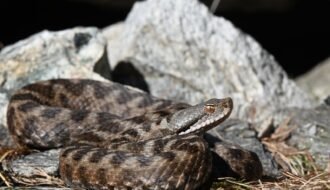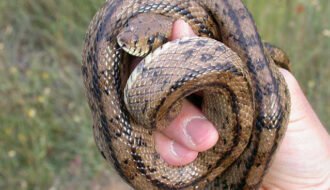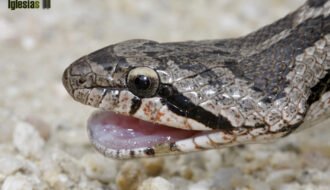Snakes of Ticino
By Edwin Vilela
Everything you need to know about Ticino snakes
The canton of Ticino, located in southern Switzerland, is a region of great natural beauty that is home to a diversity of ecosystems, from majestic Alpine peaks to lush valleys and meandering rivers. Within this rich environment, snakes play a vital role as an integral part of the ecosystem. This article will explore in depth the lives of these fascinating creatures, from their different species to their behavior, myths and realities, as well as the importance of their conservation.

Table of Contents
1. Types of Snakes in Ticino:
Ticino is home to a variety of snake species, each adapted to different habitats and ecological niches. Among the most common species are:
Vipers : Adders are venomous snakes that usually inhabit wooded and rocky areas. In Ticino, the common viper (Vipera berus) and the asp viper (Vipera aspis) are the best known species.
Colubrids : Known for their scale-like pattern, colubrids (Rhinechis scalaris) are nonvenomous snakes found in a variety of habitats, from open fields to wooded areas.
Coronella ghirondica : The Coronella ghirondica (Coronella girondica) is another common species in Ticino. This non-venomous snake is characterized by its thin, smooth body and can be found in a variety of habitats, from prairies to suburban areas.
Each one of these species has unique adaptations that allow it to survive in its specific environment. For example, vipers have venom glands in their teeth that they use to hunt prey, while colubrids and vipers rely on their speed and agility to catch insects and small mammals.



2. Behavior and Eating Habits:
The behavior and eating habits of snakes in Ticino vary depending on the species and the environment in which they live. However, there are some general characteristics that are common to many of these creatures.
Snakes are ectothermic, meaning they depend on the external environment to regulate their body temperature. In Ticino, where summers are hot and winters are mild, snakes can be particularly active during the warmer months of the year. During this time, they will actively search for prey and move between different areas in search of food and shelter.
Regarding their diet, snakes in Ticino are generally predatory and feed on a variety of prey, which include small mammals, birds, insects and other reptiles. Vipers, with their powerful venom, are able to hunt larger prey, such as mice and lizards, while colubrids and the hurdy-gurdy tend to feed on smaller prey, such as insects and young rodents.
Despite their reputation as predators, snakes in Ticino are also prey to other animals, such as birds of prey and carnivorous mammals. To protect themselves from predators and regulate their body temperature, snakes usually seek refuge in burrows, rock crevices and other protected places during the hottest hours of the day.
3. Myths and Realities about Snakes:
Throughout history, snakes have been the subject of numerous myths and superstitions, many of which persist to this day. However, it’s important to separate fact from fiction when it comes to these fascinating creatures.
One of the most common myths about snakes is that all are poisonous and dangerous to humans. While it is true that some snake species in Ticino are venomous, most are harmless and rarely pose a threat to humans. In fact, many snakes are beneficial to the environment, as they help control populations of rodents and other animals that may be considered pests.
Another common myth is that snakes are aggressive and attack humans without provocation. In reality, most snakes prefer to flee rather than fight and will only attack if they feel threatened or trapped. Therefore, it is important to give them space and respect their territory when they are in nature.
In addition to myths, there are also many fascinating facts about snakes that are worth exploring. For example, some snake species are able to detect the body heat of their prey using specialized organs in the head, known as thermosensory pits. This ability allows them to locate prey in the dark and in conditions of poor visibility.
4. Safety and Prevention of Dangerous Encounters:
Although snakes in Ticino are generally harmless to humans, it is important to take precautions to avoid dangerous encounters, especially in areas where snake populations are higher. Some security measures you can take include:
- Keep gardens clean and tidy to eliminate possible hiding places for snakes.
- Wear closed shoes when walking in natural areas, especially in wooded or rocky areas.
- Learn to identify local snakes and their typical behaviors.
- Keep a safe distance if you encounter a snake and never try to handle or harass it.
If you find a snake on your property, it is best to stay calm and move away slowly. Most snakes will flee rather than attack if given the opportunity, so it is important not to make sudden movements or try to capture them.

5. Historical Cases of Attacks:
Although snake attacks in Ticino are rare, cases have been recorded over the years. These incidents usually occur when people get too close to snakes or try to manipulate them in some way. In most cases, injuries are minor and can be prevented by taking simple precautions.
Local authorities usually track these incidents and can provide information on how to prevent attacks in the future. Additionally, some areas may be marked as snake habitat, allowing visitors to take extra precautions when exploring nature.
6. Conservation and Protection of Snakes:
Ticino has conservation initiatives in place aimed at protecting both snakes and their habitat. These efforts include creating protected areas, public education about the importance of snakes, and promoting sustainable gardening practices.
One of the main threats to snakes in Ticino is habitat loss due to urban development and intensive agriculture. To address this problem, measures are being taken to protect and restore the snakes’ natural habitats, thus ensuring their long-term survival.
In addition to habitat conservation, it is also important to address other threats to snakes, such as water pollution and the introduction of invasive species. By working together to protect these fascinating creatures, we can ensure they continue to play their vital role in Ticino’s ecosystem.
Questions and answers:
- What are the most common snakes in Ticino?
- The most common species include the viper, the colubrid and the hurdy-gurdy.
- Are all Ticino snakes poisonous?
- No, most snakes in Ticino are harmless to humans.
- What should I do if I find a snake in my garden?
- Stay calm, keep your distance and let the snake go away on its own.
- How many snake attacks are recorded in Ticino every year?
- Attacks are rare and vary from year to year.
- What preventative measures can be taken to avoid dangerous encounters with snakes?
- Keeping yards clean, wearing appropriate footwear in natural areas and learning to identify local snakes can help prevent unwanted encounters.
